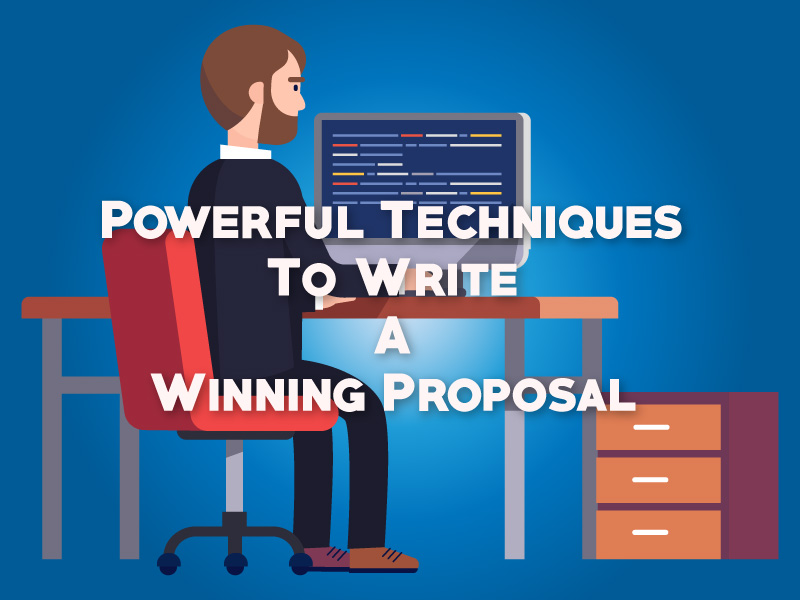The way businesses are conducted today there is a good chance that you have more proposal writing ahead of you than you suspect. Your high competence in writing a winning proposal will go a long way contributing to your overall professional and personal success.
As the situation may demand, you may need to prepare formal proposals in a format either prescribed by an organization or the occasion. For example, if you’re aiming for investment by venture capitalists, you must meet your audience’s expectations of content and style.
In many cases, however, a far less formal proposal can succeed and may even be preferred by your target audience. More and more consultants I know use brief proposals to sell their services.
Here, I show you how to write both varieties. I also recommend reading our complete guide to communication skills in case you also wish to improve your communication skills.
Writing Business Proposals
Most RFPs (Request for Proposals) require formal, standardized responses. It is true in most big-business situations. You may have a list of specifications to meet in a predefined format.
If that is the case, you should always follow those specifications to the letter, more so if you are bidding for a Government tender. At other times, you may have more leeway to organize your document as you like or to interpret a set of guidelines.
For help with preparing a long-form, high-stakes proposal, check out Internet resources and business management books. You can find abundant good advice on formatting and specific buzzwords to use, but you probably can’t find much about the process of writing the proposal itself.
Not to worry. Here are several tips for answering RFPs that can make the difference between winning a bid and losing out:
Start telling stories

Even if the prescribed format makes storytelling tough, use the space to communicate a cohesive picture of what you recommend, what you’ll do, and why you’re the best person or company to do the job.
True, specialists may scrutinize only a few sections, but key readers review the whole document and want it to make sense cumulatively, with the least repetition as possible. I recommend reading Storytelling Techniques for building your skills.
Identify your target audience’s goal

If you’re pitching for a complex contract, it is better to read and understand the company and the problem it’s trying to solve. Yes, there is always a problem to solve. Read the RFP in detail and read between the lines and research the organization to see how the requested work fits into the company’s overall needs and how you can fill the gap.
While doing so, you’ll pick up keywords to incorporate and better understand the company’s “voice” so you can respond in kind and show you’re on the same page. Always talk in your target audience’s language.
Give your target audience, what they need
Include content and details that specifically match audience expectations. Remember that most business people want to increase profitability or efficiency. All reviewers want to know a project’s timetable, how you measure success, the budget, who will do the work and their credentials, and your track record and specific qualifications for the job.
Write in a simple and conversational tone
Use a slightly more formal tone than you’d use for everyday communication — fewer contractions, for example — but don’t sound overly academic and stuffy. It’s best to write in the third person, with the company as an entity, unless you are the central or the only person involved.
A two-person organization can use “we,” and if you have a virtual team to call on, “we” is also okay. Make your language lively but jargon-free. See Chapter 4 for more tips about how to do this.
Speak the audience’s language
Notice any statements that are emphasized or repeated. These are clues to the organization’s hot buttons and perhaps sensitivities honed by experience. Incorporate key phrases and ideas in your responses, but don’t come across as if you’re parroting back their words rather than providing the answers they hope for. And be sure to explain how you’ll measure outcomes!
Remember the decision is about you
Whatever you’re proposing, you’re asking someone to choose you and your team. Never skimp the biographical section.
Show why each team member is right for the role, how the team works together, its accomplishments, and why you, in particular, can be trusted to deliver on time, within budget, and to specification.
Demonstrate evidence
Don’t say “the team is creative, reliable, and efficient.” Cite examples, case histories, statistics, and testimonials that demonstrate these points, as appropriate. Impress with substance rather than empty claims. “Tests show that our cement lasts 16 percent longer than other varieties” is better than “our cement lasts forever.” Remember it is not a marketing pitch!
Edit and review
After writing, review and correct your document in several stages. A single error may cost you your credibility. Ask a friend with sharp eyes to proof for you, too.
If you fail to showcase your ability to communicate well and correctly within the document itself, you lose ground regardless of what you’re trying to win.
Looks still matter
Your competitors will. Use all the graphic options to help your proposal read well and easily. Give your readers opportunities to rest their eyes. Include relevant graphics — images, graphs, charts, infographics — but they must never be extraneous.
If a lot rests on this document, ask a friend with the design ability for guidance. Or find a good model and adapt elements of its design or the whole layout.
Aways do a big-picture review of your document before sending out a proposal. Ask yourself (or a colleague) the following questions:
[su_list icon=”icon: thumbs-up” icon_color=”#ce1515″]
- Did I demonstrate my understanding of the problem or goal?
- Did I explain who we are and why we’re the best choice?
- Did I clearly state what I will do to address the problem and the expected outcomes?
- Did I clearly spell out what “success” will look like and how it will be measured?
- If different people worked on the proposal, has the whole piece been edited to read consistently and well?
[/su_list]
It will take some practice and patience but following some simple yet powerful techniques to write a winning proposal will transform the way you were able to present your ideas. Good luck!


